After a several hour drive on that day, I finally saw the waters of the Mozambique Channel. In addition to these waters, we could also see a local mountain called La Table which means “the table” and it is quite clear from its looks why it has been named like that. On the other hand, it should not be mixed with Table Mountain in South Africa. This one here is significantly smaller.
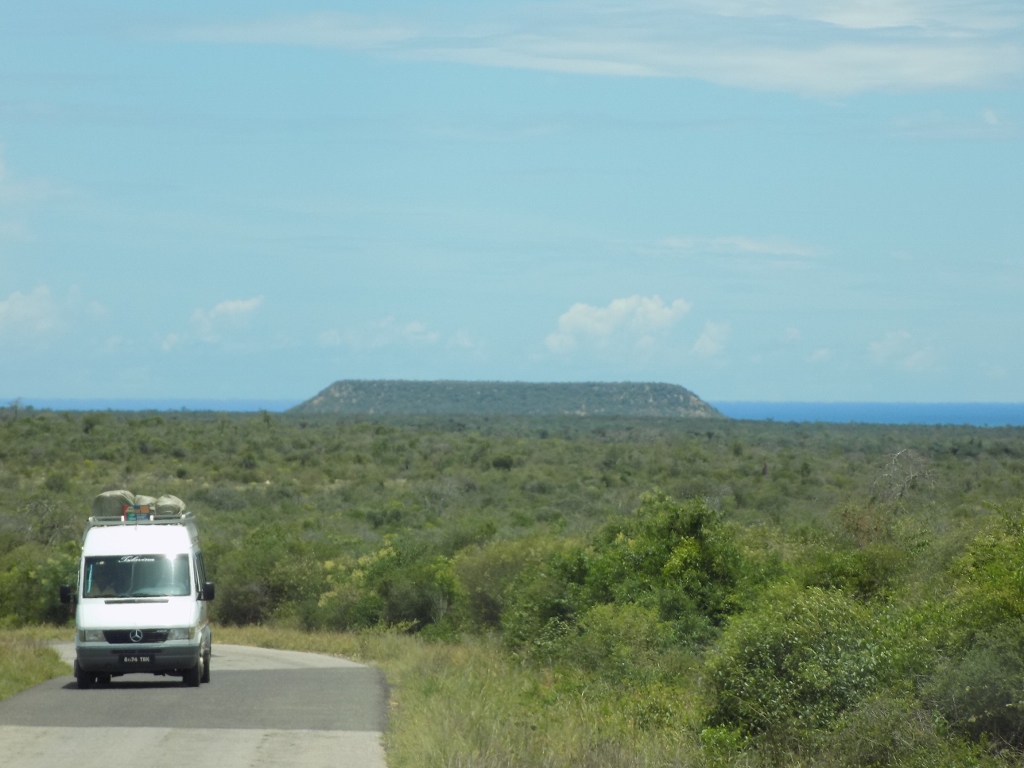 La Table mountain and the Mozambique Channel behind it
La Table mountain and the Mozambique Channel behind it
This easily recognisable landmark also meant that my friend Sneža and I were close to our final destination of the day, town Tulear, but before getting there we first stopped at a botanical garden. This was Arboretum d’Antsokay which is located a dozen kilometres before Tulear when you reach the town by the main road, i.e., by RN7.
This private reserve was founded in 1980 by a Swiss botanist and today it contains around 900 species of plants, 90% of which are endemic to Madagascar. Within the garden there is also an information centre, as well as a small hotel with bungalows and a restaurant. Since the restaurant is said to be good and it was already early afternoon, we thought we could have our lunch there. However, when we got there, it turned out that the restaurant was undergoing renovation, so we ended up only visiting plants, while our stomachs had to wait a while longer.
I don’t know much about plants, but I still found a few of them quite interesting. For instance, one of the numerous species from the Pachypodium genus – elephant’s foot (Pachypodium rosulatum), a plant endemic to Madagascar and reminiscent of a miniature baobab. The photo below shows numerous individual plants growing in a very large flower pot.
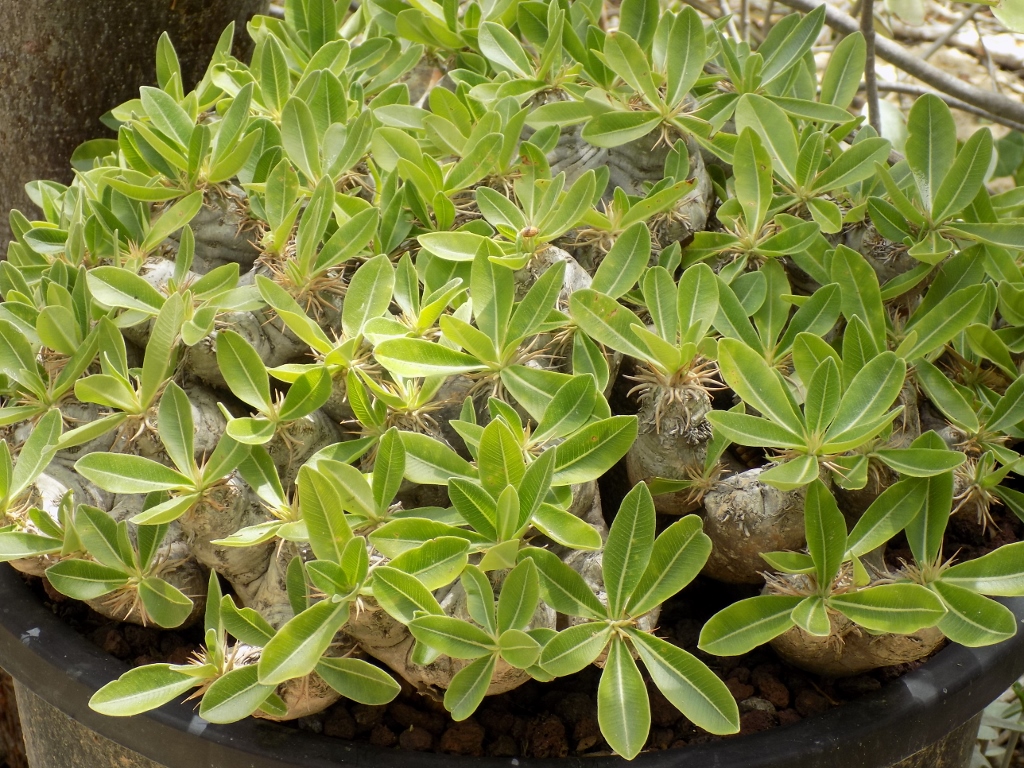 Elephant’s foot
Elephant’s foot
Then, there were a lot of specimens of a succulent plant with the Latin name of Alluaudia procera and it is endemic to south Madagascar, too. This plant may grow up to the height of over a couple of metres and has numerous very cute leaves, while in between them there are some serious thorns.
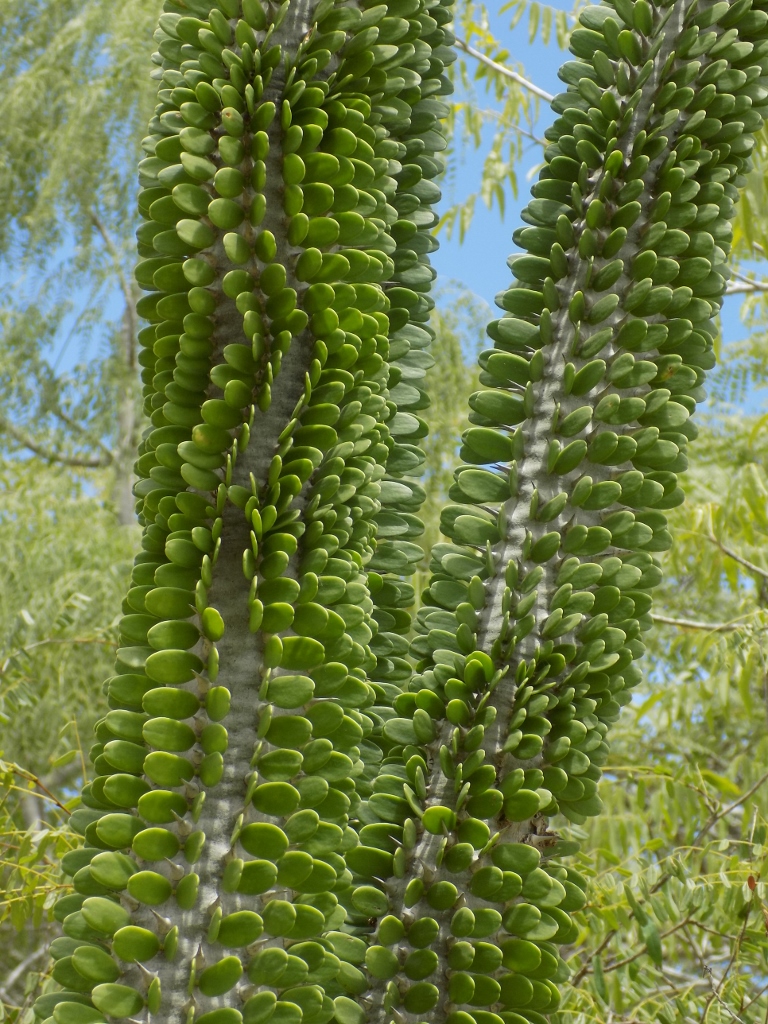 Alluaudia procera
Alluaudia procera
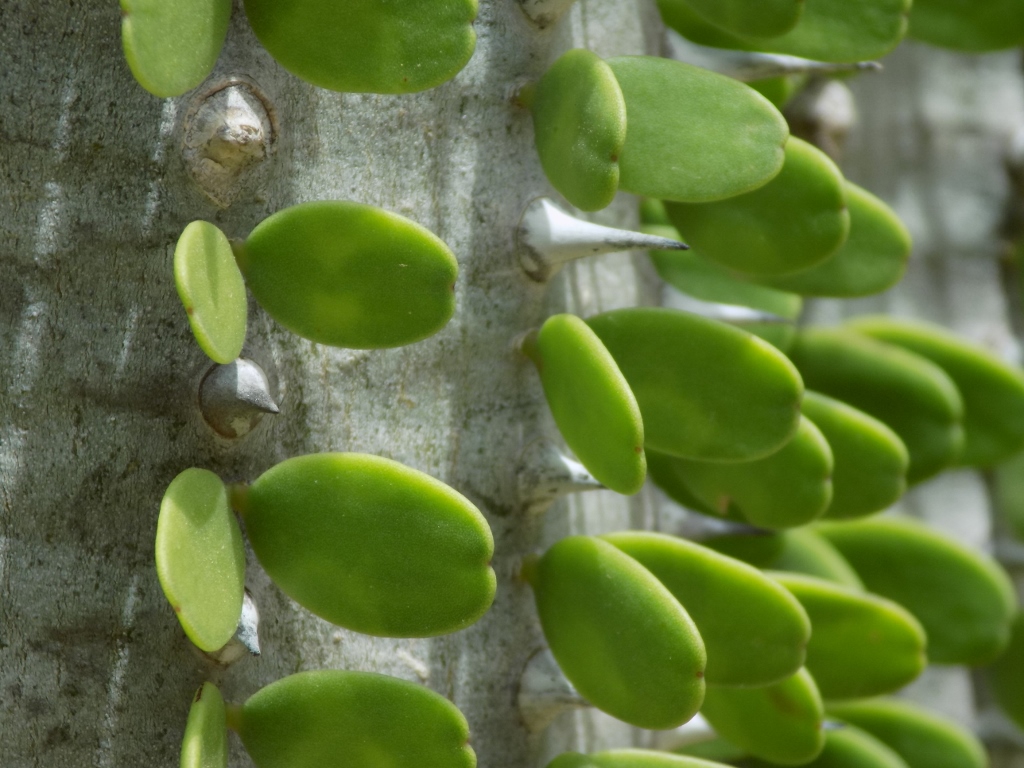 Alluaudia procera from up close
Alluaudia procera from up close
The same Didiereaceae family also includes the plants that can be seen in the photos below which have the Latin name of Didierea madagascariensi. As it may be presumed from the name this plant is also endemic to and can be found naturally only in the southwest of Madagascar. It can grow up to the height of incredible 10 metres taking into account is elongated shape.
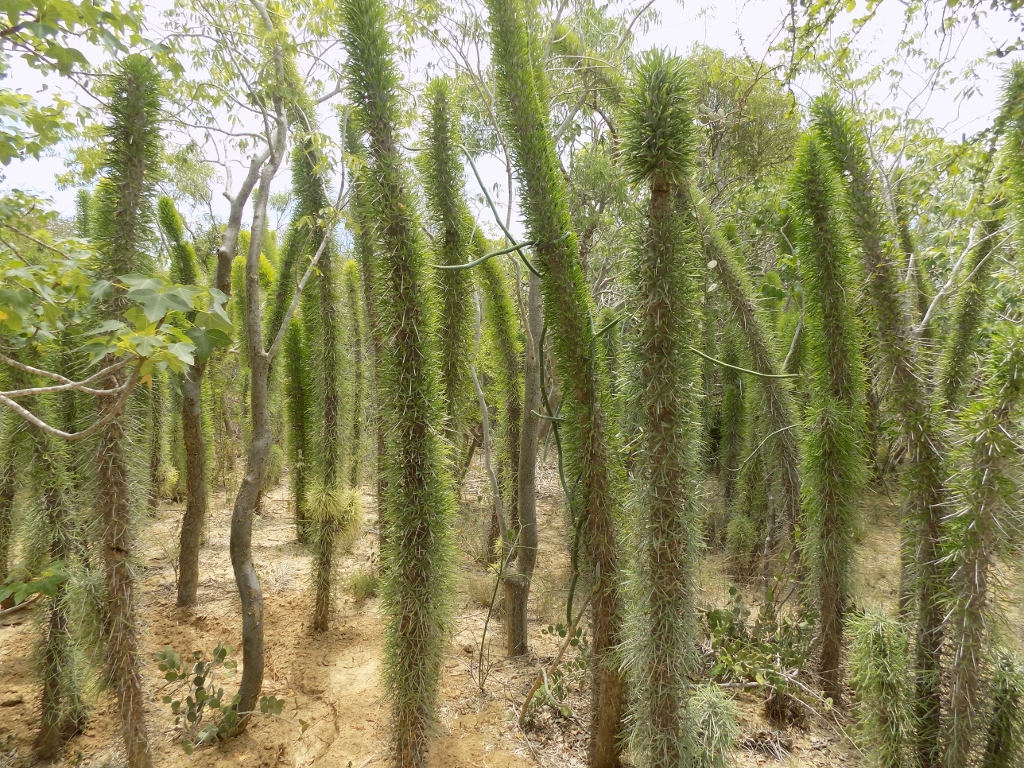 Didierea madagascariensi
Didierea madagascariensi
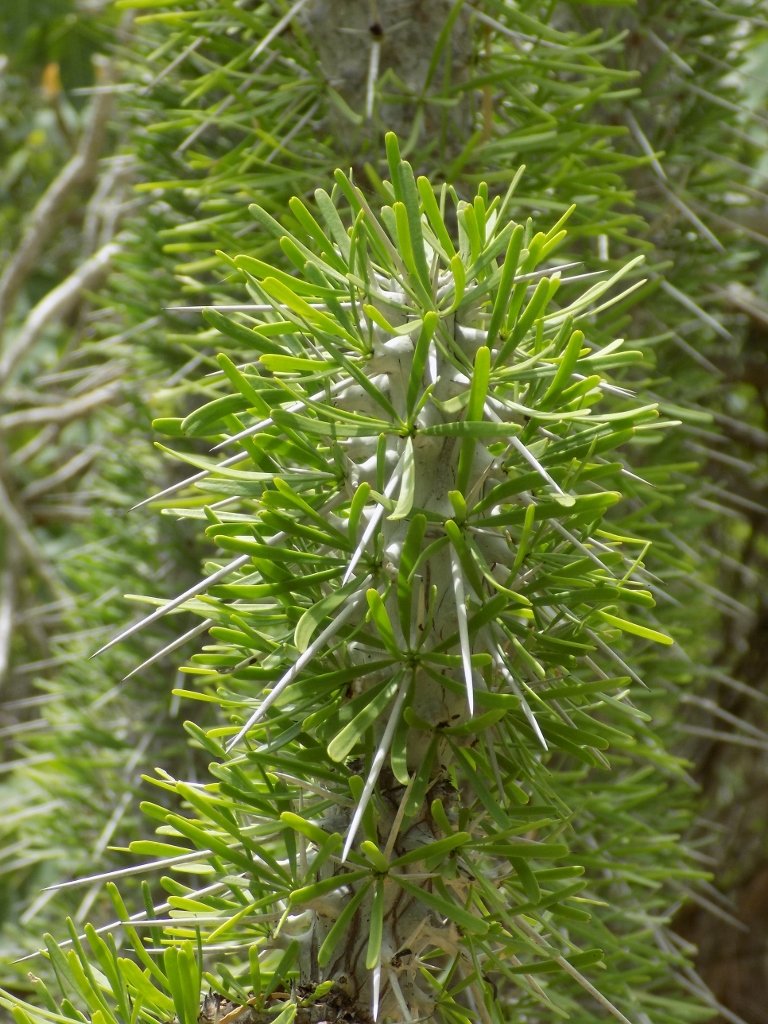 Didierea madagascariensi from up close – it also has thorns between the thin leaves
Didierea madagascariensi from up close – it also has thorns between the thin leaves
There was also another endemic plant with the Latin name of Euphorbia plagiantha. What makes it particularly interesting is its trunk or rather its bark which is of golden colour.
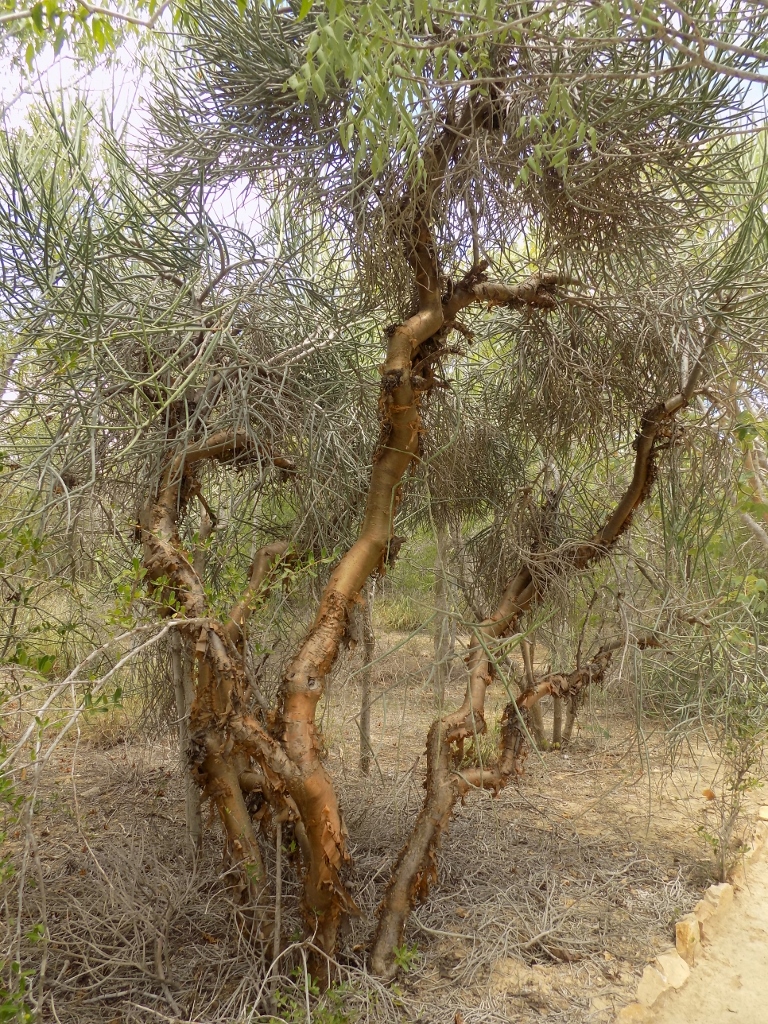 Euphorbia plagiantha
Euphorbia plagiantha
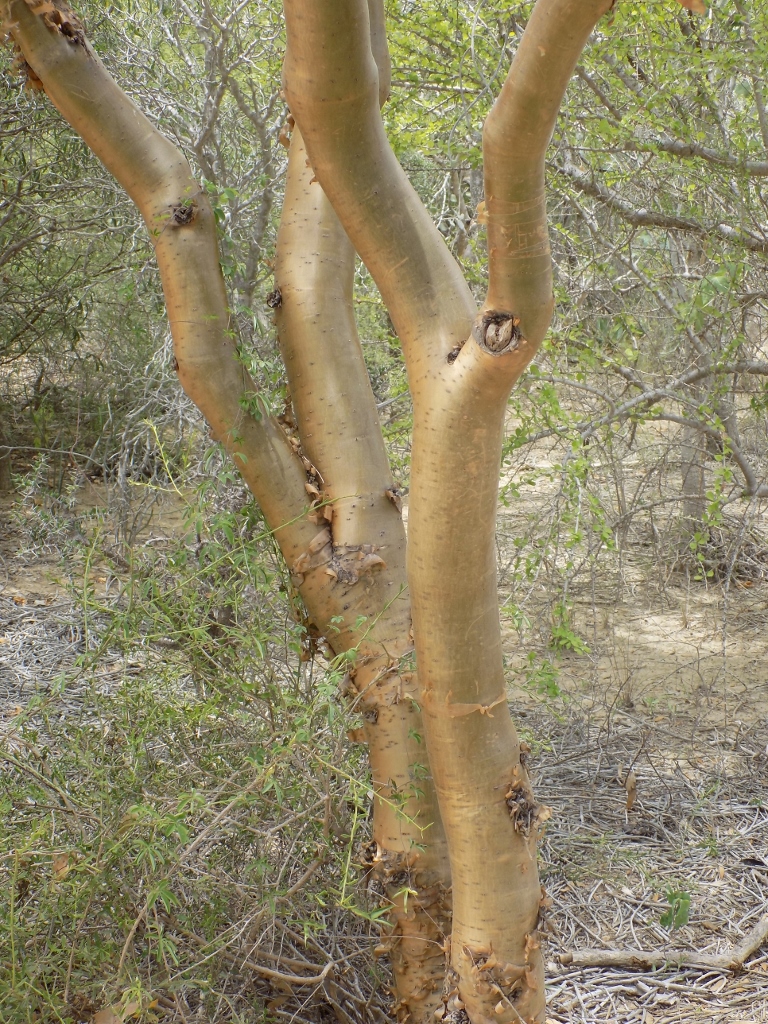 Euphorbia plagiantha
Euphorbia plagiantha
Our walk took around one hour and during that time it was incredibly hot, but we did see numerous other plants. It was additionally interesting that it is claimed that around 80% of the plants grown here also have medicinal properties. The girl who guided us pointed out some of the plants that can also be very poisonous and some of them could even make a man go blind (if you touch it and then you also touch your eyes). On the other hand, there are some other plants that grow in the similar habitat and they can be applied to treat the adverse action of the former ones. This girl spoke with a lot of enthusiasm saying that everything already exists in nature, but although we agree with such a position in principle, Sneža and I still wondered how somebody managed to find those antidotes. How many people had to go blind (without learning that the plant should not be touched in the first place) and then these people were used for experimenting with other plants as potential antidotes, before the cure has been found? But, just to be on the safe side, we did not touch anything there.
In addition to these different plants to which this reserve is dedicated, we could also see several animal species here. Some of them spend their time here naturally, while others are grown or kept. One of the animals we saw during our walk was a Madagascar swift.
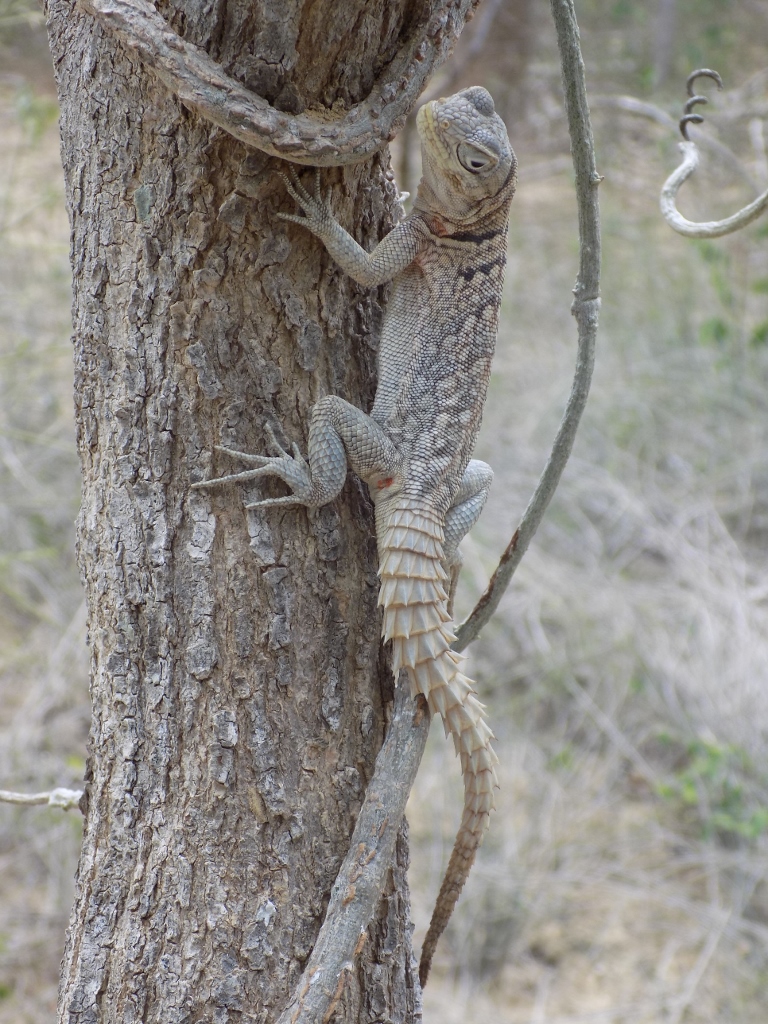 Madagascar swift
Madagascar swift
But, I also saw a couple of Madagascan magpie-robins (Copsychus albospecularis). That is yet another endemic species from Madagascar.
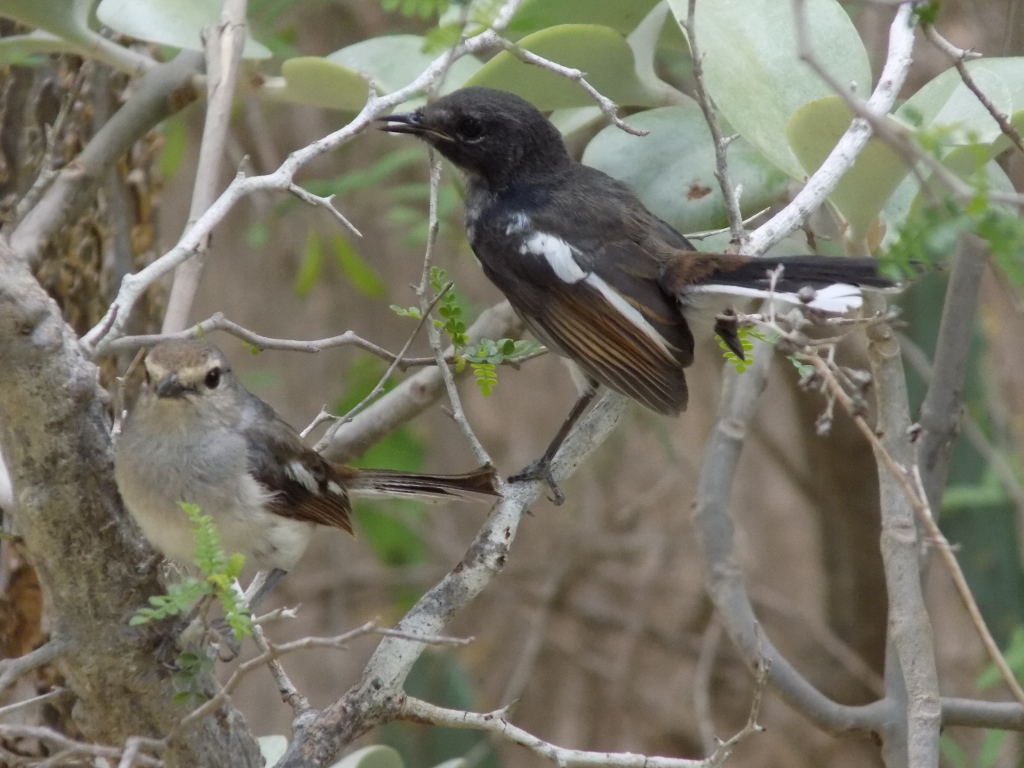 Madagascan magpie-robins: female is to the left and the male is to the right
Madagascan magpie-robins: female is to the left and the male is to the right
Tucked away in a corner, until the heat of the day had passed, we also saw a few specimens of the endangered radiated tortoise (Astrochelys radiata). This is an endemic species that is critically endangered and Arboretum d’Antsokay gives its contribution to the fight for the survival of this tortoise species. They are endangered on account of the diminishing habitats in which they naturally live, as well as because of the poaching since they are interesting for some idiots around the world who like to keep them as pets.
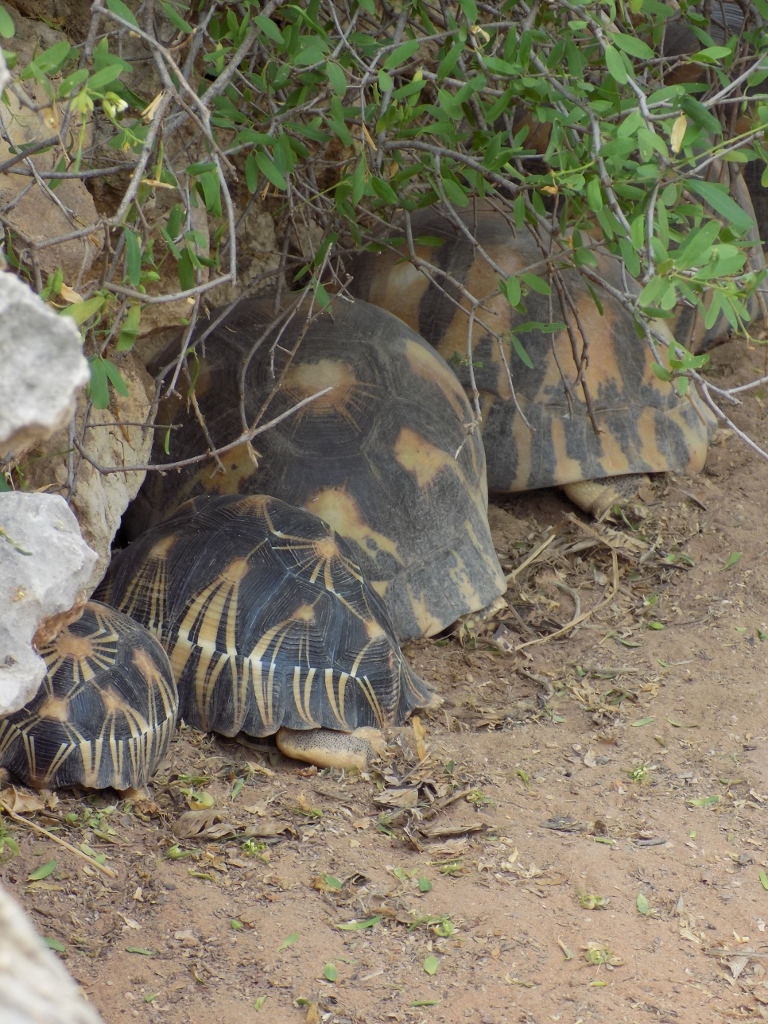
A few radiated tortoises
Our visit to the arboretum also included a visit to a room which served as a small museum. There were different objects there, but for me the most interesting exhibit was an egg (made whole out of glued pieces, since the original egg had been broken). The egg belongs to an extinct species of the elephant bird. Those huge birds which include a few genera used to live only on Madagascar, but they died out. Some data says that they became extinct in the 11th or the 12th century, while other says that the last specimen disappeared in the 17th century. Be as it may, almost everybody agrees that it was the humans who had their hands in the extinction of these birds. For one bird species that belonged to this family it has been established that it weighted around 730 kg and that it was 3 metres tall, and because of this it has been “declared” the biggest bird in the world.
As for the eggs of these birds, even today it is possible to find broken shells, although sometimes one may find whole eggs. These are, just like their parents, gigantic – some may have a circumference of one metre and the volume equal to the quantity of over 150 chicken eggs.
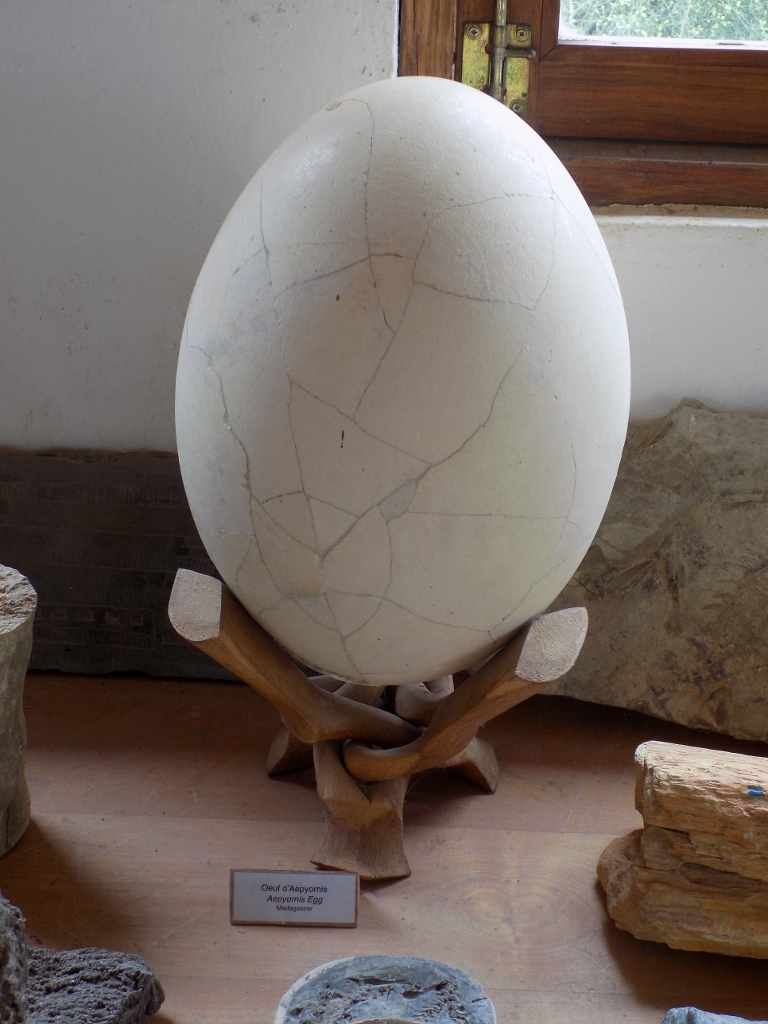 Elephant bird’s egg
Elephant bird’s egg
After the visit to this “museum” our sightseeing tour was over and we got into the car again and with Rija went to the hotel in town Tulear which by now was not too far away.
To start with, there are two names used for this town: Tulear or Toliara and this is the biggest town in the southwest of Madagascar. When I returned home I found out that there is a species of small dogs named precisely after this town from which they originally came – Coton de Tulear.
While we were here, I did not notice any dogs, but when we reached the town we first settled in a hotel, left our things in our room and then went for lunch in a restaurant that was located almost right next to our hotel. We were hungry. Since the town is situated on the shore of an ocean (the Mozambique Channel is a part of the Indian Ocean), it was logical that we should take some sea food. And we did not regret it.
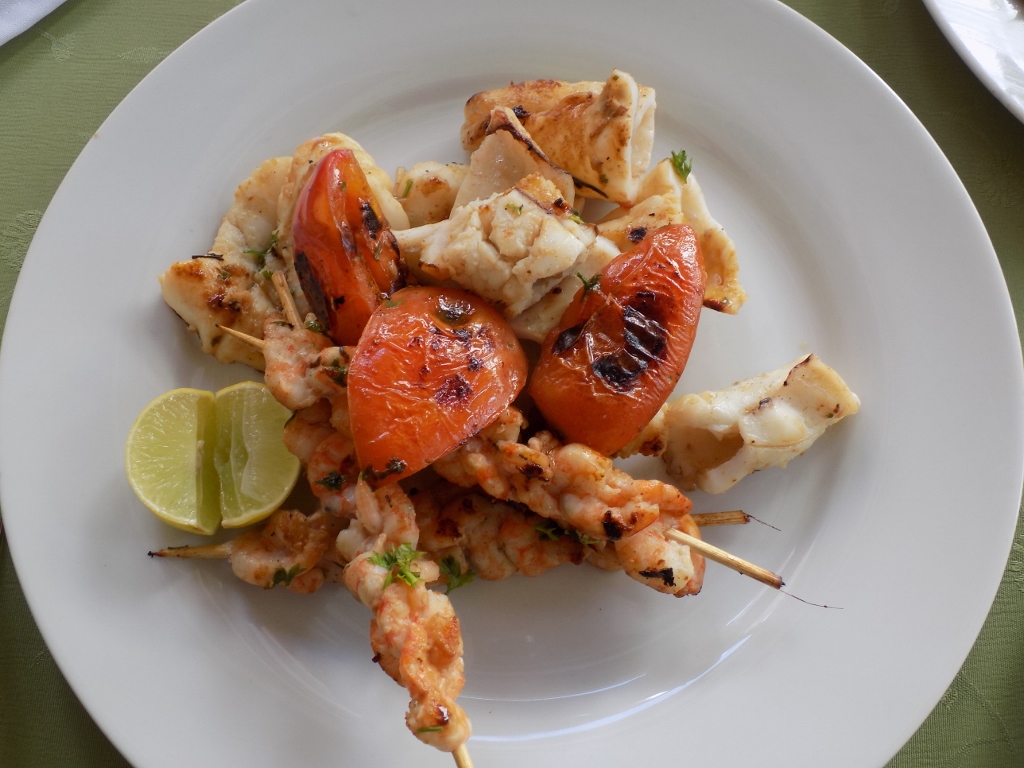 A part of the lunch in Tulear
A part of the lunch in Tulear
At the end of our meal, the owner of the restaurant brought us a glass of baobab juice to try. Although we were grateful for the gesture, I must admit we were not delighted with the juice. Neither of us actually liked the taste.
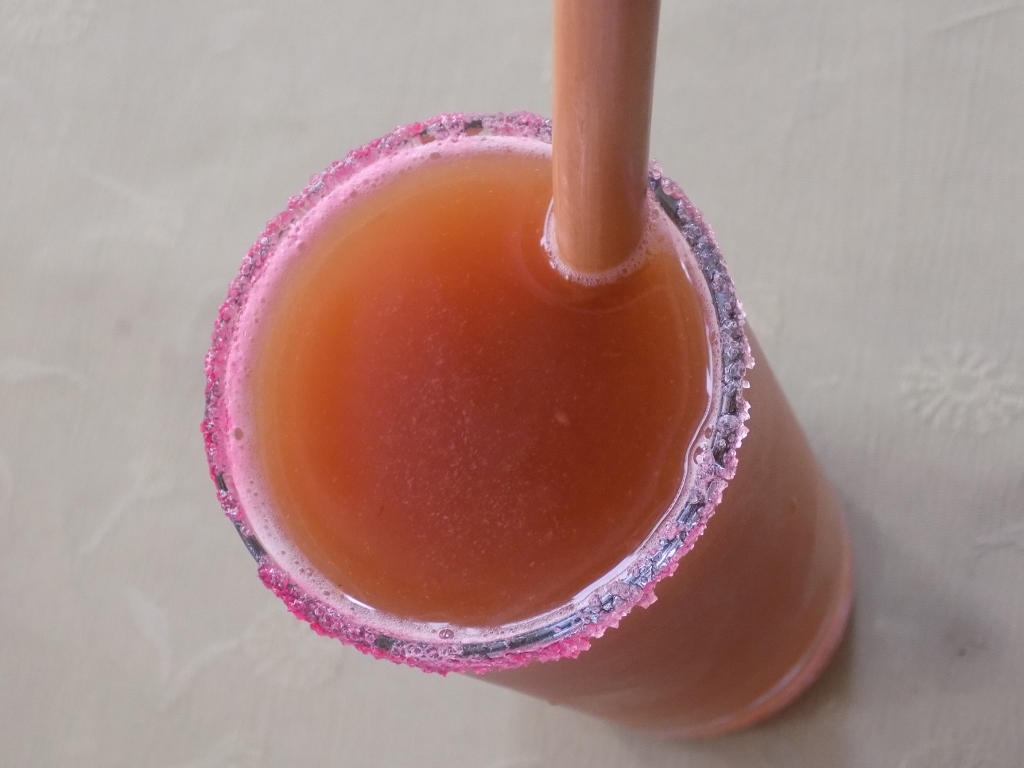 Baobab juice
Baobab juice
But, as soon as we had finished with our lunch we went (Rija drove us) to the place from which we were to continue with our journey the next day, but without Rija. Although I had a proper confirmation of the booking (made a couple of months earlier), we went there just to make sure everything was all right and in the end it all really functioned perfectly.
After our brief stay at the office of the transportation agency, we quickly went back to our hotel room because by this time we really needed it. Namely, it was very hot and very, very humid in Tulear, so we utterly enjoyed when our hotel room started to cool down thanks to air conditioning.
Following a certain period of cooling down, we did decide to walk a little in the direction of the port, since we saw some shops with souvenirs and Sneža is particularly keen on such shops. While we were there it started to drizzle, just a little, but then it stopped. We took advantage of this situation and returned to our hotel, which was good also because it was getting dark. Soon an incredible downpour started which went on and on and on... In Europe, there are simply no such rains and there is nothing I could compare this to. Needless to say, we were very happy to be in the safety of our room at the time of this heavenly waterfall.
The following morning, after breakfast, I took advantage of the proximity of a local green market to take a short walk over there. In addition to buying us some fruits, I could also witness the quantity of rain that fell from the sky the night before. Namely, a part of the market extends along a street which has an inclination in its middle, like the bottom of a boat.
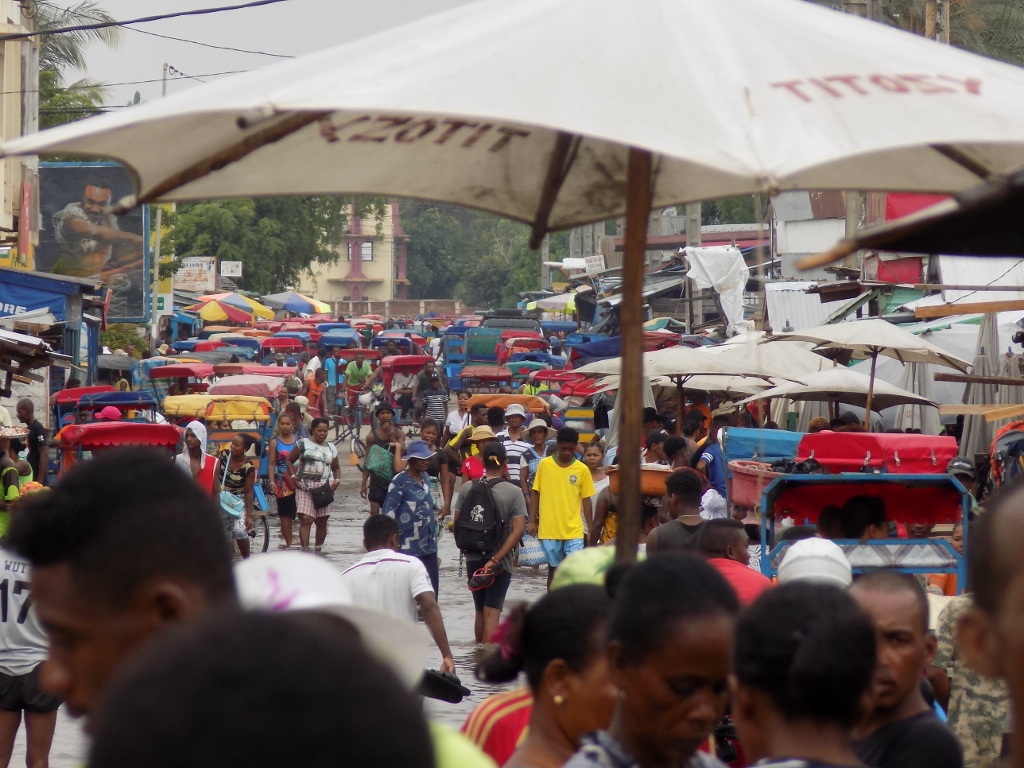 Market in Tulear after the big downpour
Market in Tulear after the big downpour
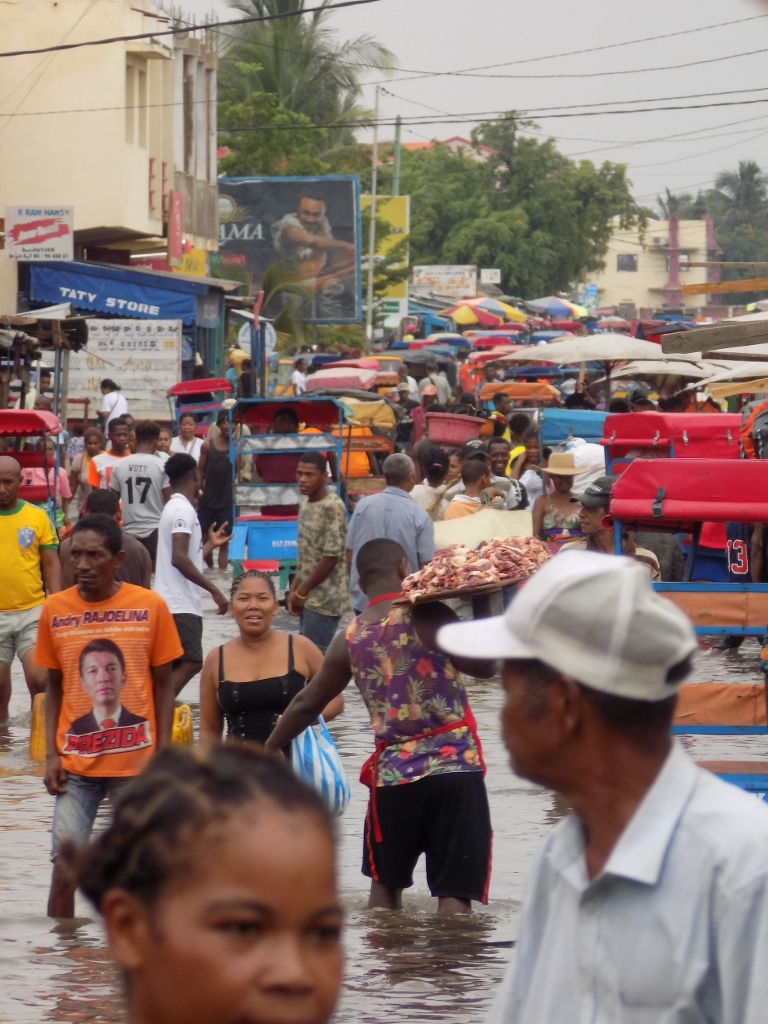 Market in Tulear after the big downpour
Market in Tulear after the big downpour
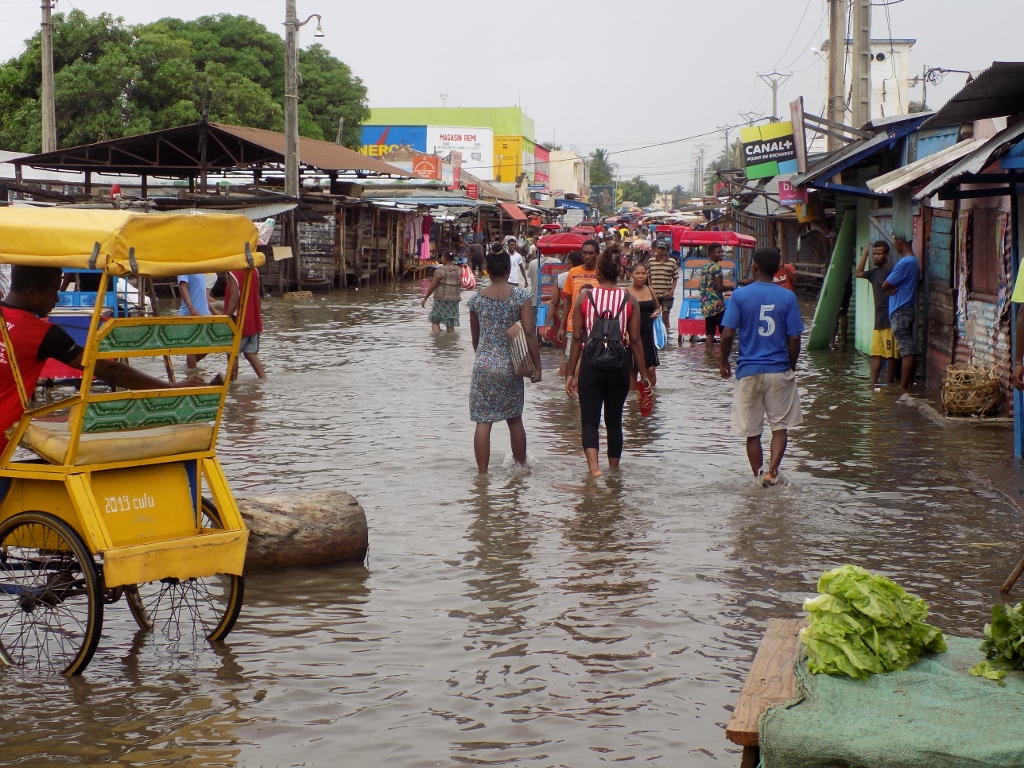 Market in Tulear after the big downpour
Market in Tulear after the big downpour
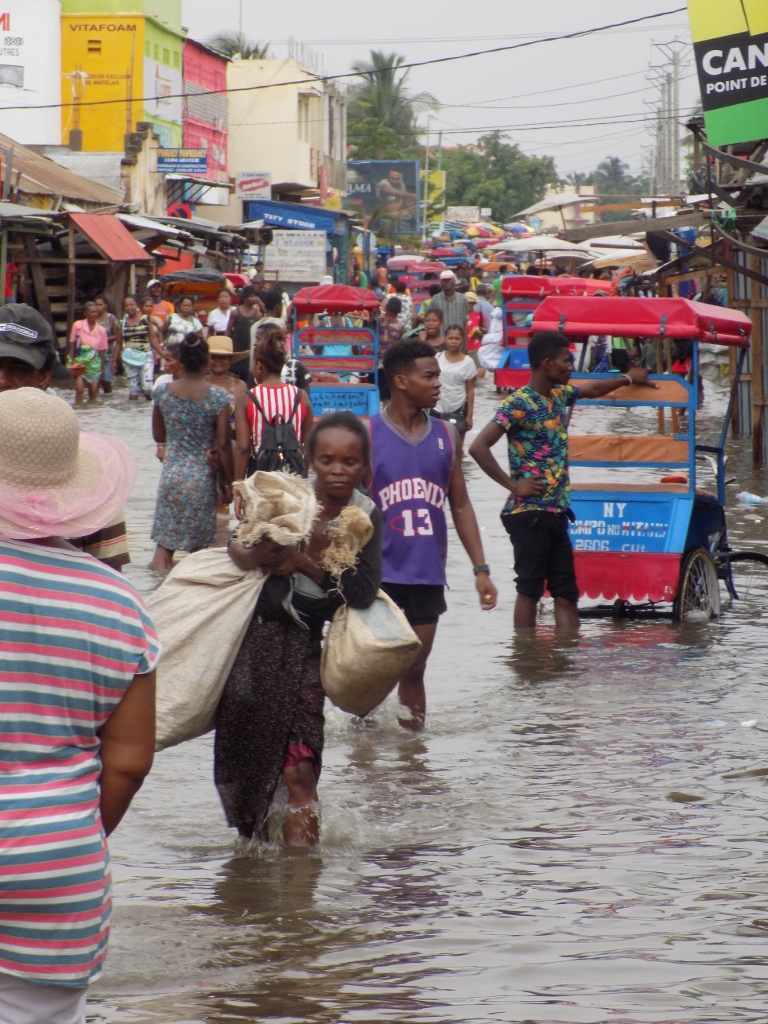 Market in Tulear after the big downpour
Market in Tulear after the big downpour
After my brief walk around the perimeter of the market, I went back to the hotel room where Sneža and I packed and then met Rija in front of the hotel at the agreed time so that he could take us to the port where we parted. Namely, the two of us were going on a three-day mini-vacation, while he was driving back to Antananarivo where we were to meet again at the airport in a few days. We wished him a safe journey, while we went to the small terminal of a local transportation agency. This was one of two local companies that use speedboats for the transportation of passengers to a popular place on the coast south of Tulear.
Specifically, our next destination was a small village Anakao which can also be reached by land, but it is rather complicated – the road is of the dirt road kind, with a lot of potholes, plus the distance is around 270 km since it is necessary to go around and round. In addition, I suppose that during the rainy season the road which is anyway in a questionable state may turn into an almost insurmountable obstacle. For this reason, I booked seats on a speedboat for the two of us. When you go by speedboat, the distance between Tulear and Anakao is only around 35 km. These two companies that organise the transportation say that it takes one hour, but in our case it was almost two. However, the very form and the consequential fun nature of this “public transportation” were enough that we did not mind. Quite the contrary, I was absolutely delighted and could not hide it.
On the other hand, when we got to the office of the transportation company which also served as the “terminal” I was confused for a moment or two, since there was no ocean there to speak of. In fact, there was, but it was rather far away and between us and the ocean on which our speedboat rocked gently there was an uninviting dark muddy patch of land.
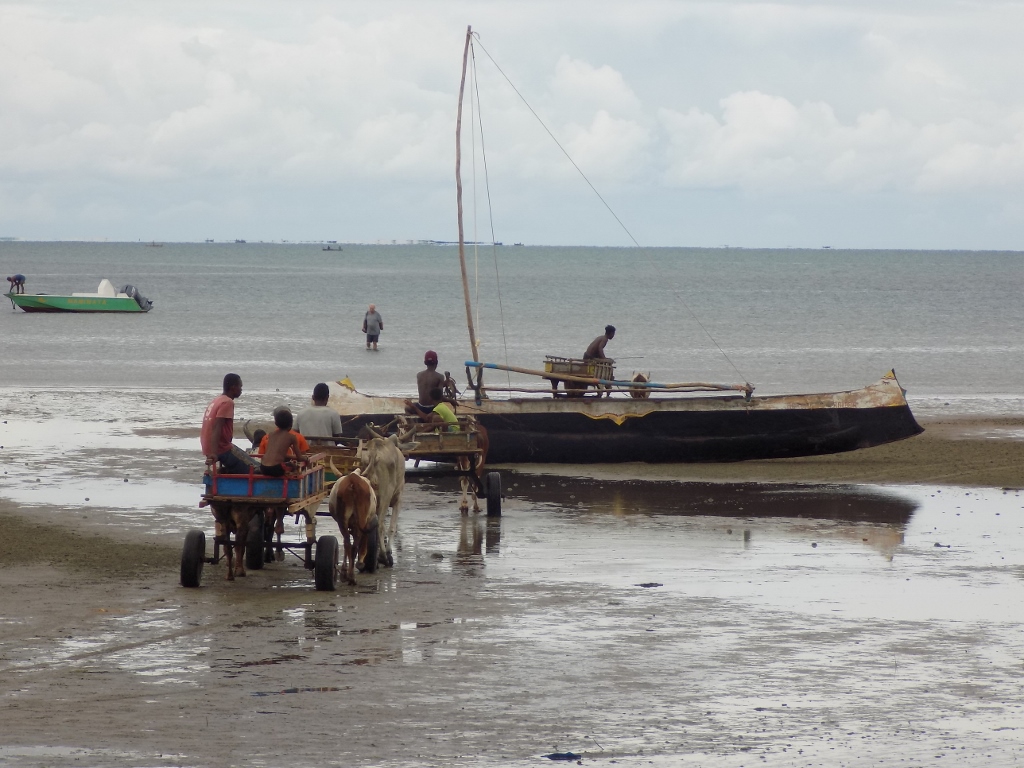 “Port” in Tulear
“Port” in Tulear
I saw a notice-board of a kind saying “make sure you tip the drivers of zebu carts,” but I first thought this concerned the situation when we reached Anakao since when making the reservation I came across information that the transportation company provided transfer right to the hotel of choice in Anakao. Watching the situation on that muddy ground from the wooden platform, I finally realised what this was about. Namely, because of the low tide and the distance between the speedboat and the dry land and “terminal,” the company organized several zebu-pulled carts and thus the passengers and the luggage were transported to the speedboat. We waited a little for the time of our boarding and so I could see that things indeed were organised as I had concluded previously. Our waiting also meant that the passengers who had just arrived from Anakao had to disembark first.
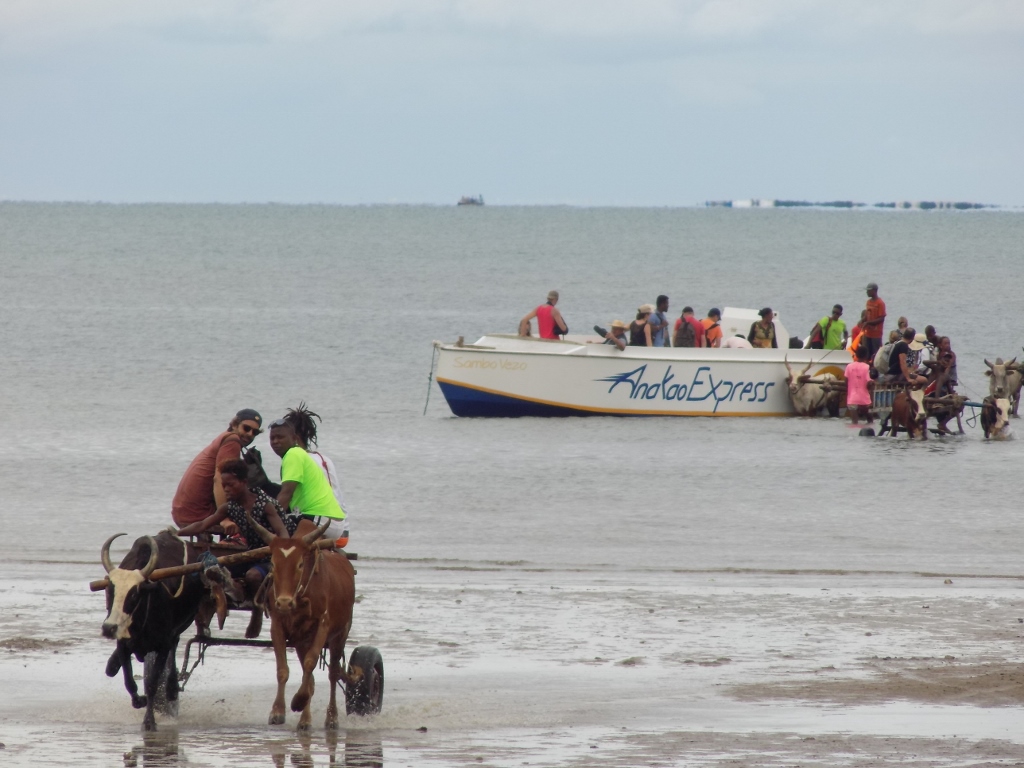 Transfer of passengers from the speedboat to the terminal
Transfer of passengers from the speedboat to the terminal
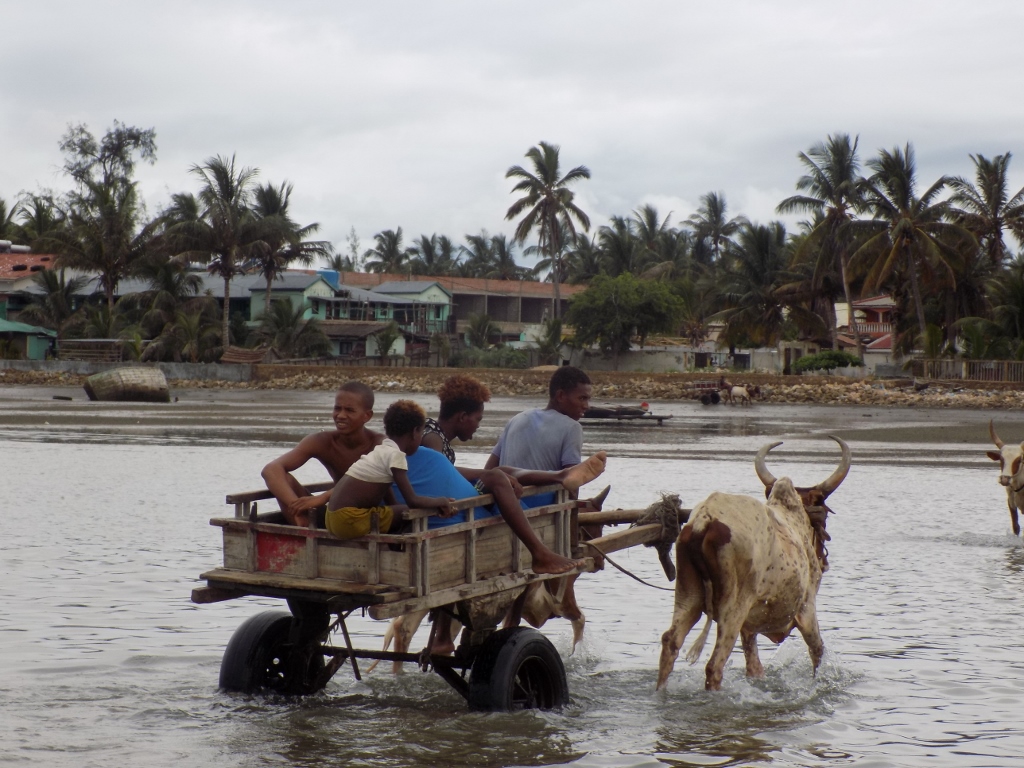 Luggage is transferred, too (the blue backpack)
Luggage is transferred, too (the blue backpack)
When it was our turn, we got into the cart from the wooden platform and thus we were taken to the speedboat. This is what it was more or less like:
As for the “transfer” to the hotel, when it reaches Anakao, the speedboat goes from one hotel there are passengers for to the next by sailing all the way into the shallows where the hotel’s staff takes over the luggage, while the passengers jump into that shallow water before getting out on the dry land in the shape of a sandy beach. In this way, the two of us were met by a girl working at our hotel of choice, we went to the bar, i.e., to the sitting area where we were offered nice tea and then we formally registered and got basic information.
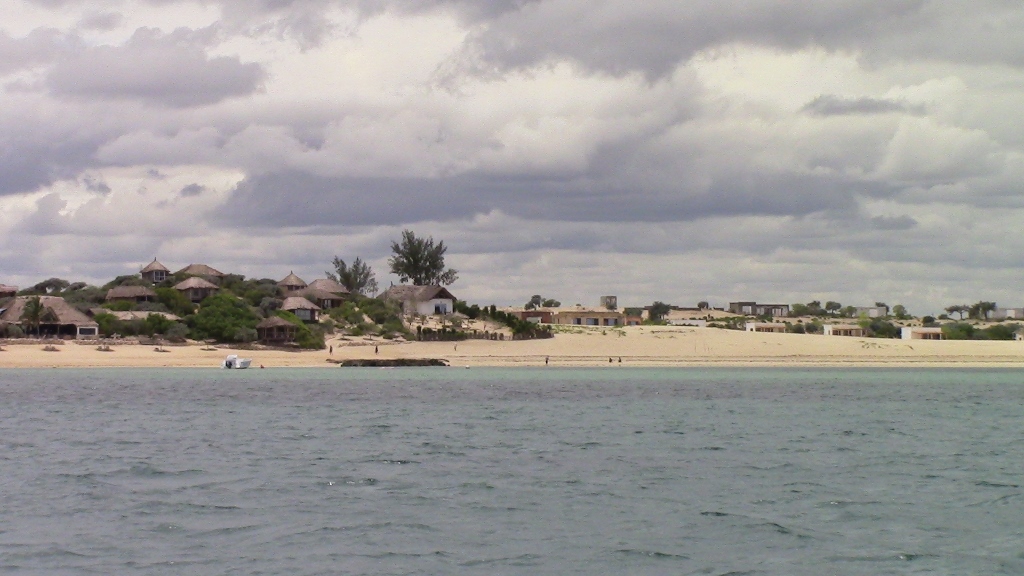 Bungalows of one of the hotels in village Anakao
Bungalows of one of the hotels in village Anakao
Although I had made the reservation of a simplest bungalow, there on the spot we decided to take a somewhat improved version and thus we chose bathroom with running and hot water (the original reservation meant taking shower by pouring water over oneself using a jug and taking the water from some tub). Seeing that this was not a typical tourist village, we also opted for a half-board. It was all very nice, but the most beautiful thing was that our bungalow was a mere dozen metres away from the beach. Taking into consideration that we were totally out of season here, it turned out we were the only guests in the hotel and in this way the entire beach in that section and all the beach-beds were available just to the two of us.
Over the next three days, I would occasionally notice some other visitors, but they were apparently staying at other hotels or wherever. All the hotels in Anakao, and there were not many of them, were in the form of bungalows, i.e., there were no big buildings.